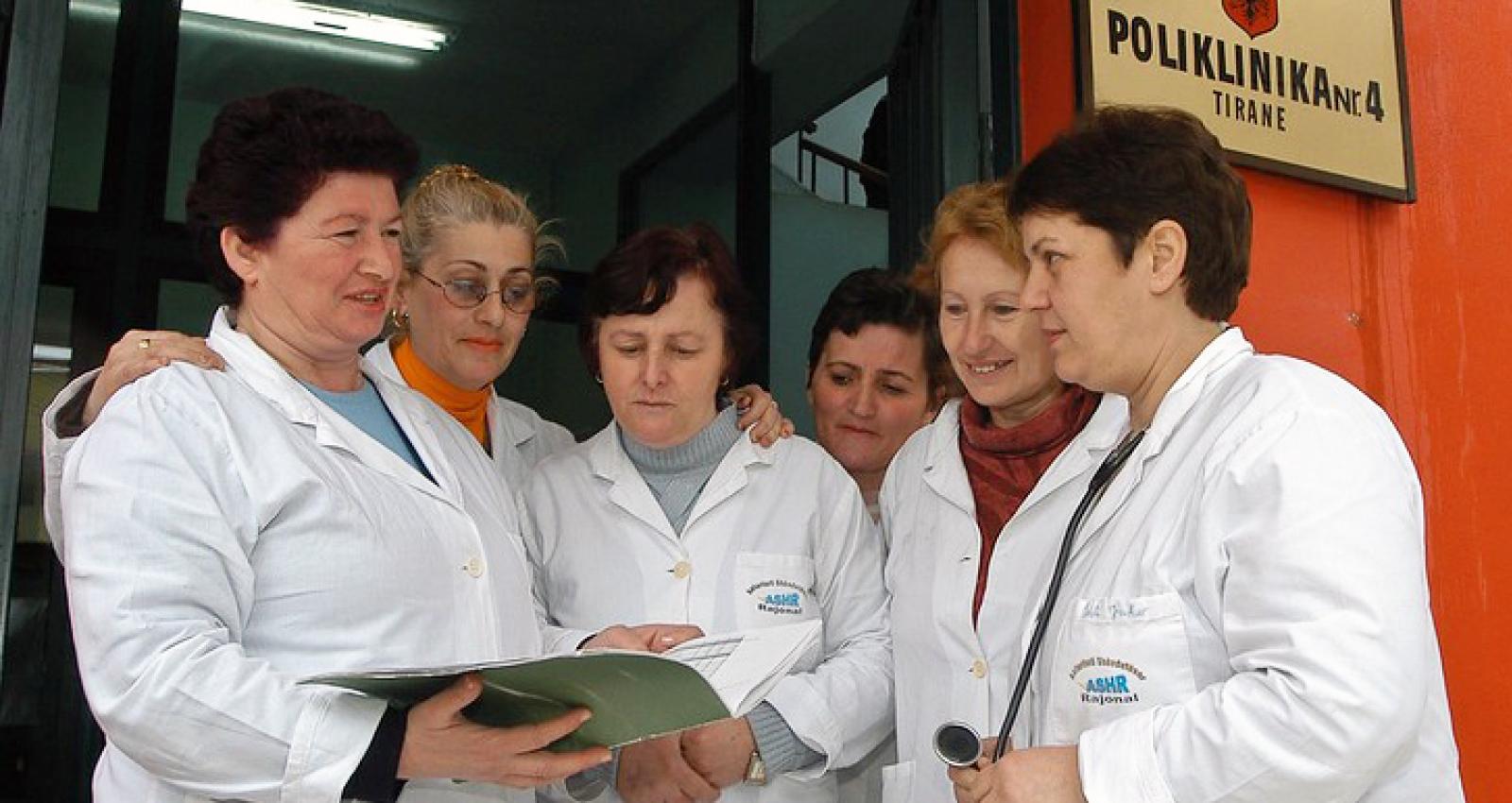With the COVID-19 pandemic aggravating inequalities, closing gender gaps has become ever more urgent. We look to recent evaluations of World Bank Group supported programs in Albania and Rwanda for five lessons on how to keep pushing the agenda.
The ongoing social and economic disadvantages that women around the world face, known collectively as ‘gender gaps’, has left them especially vulnerable to the many impacts of the COVID-19 pandemic. Women have lost jobs at higher rates, often losing out on education to become care-givers, and their already unequal decision-making power has diminished even further (World Bank, 2020 and 2021). This development calls for policy makers to act strategically to reverse the disproportionate impact of the pandemic and make progress towards reducing gender gaps, which persist despite decades of initiatives and efforts (e.g. UN, World Bank, and IDA).
The World Bank Group supports the closing of gender gaps through the implementation of its Gender Equality Strategy, which emphasizes strengthening a country-driven approach, with policy dialogue informed by better country-level diagnostics and sex-disaggregated data to achieve results. IEG’s Country Program Evaluations assess the outcomes of World Bank Group support to client governments; they often include a focus on how this support helps reduce gender gaps and advance gender-specific goals in specific countries.
Drawing from recent IEG evaluations of Albania and Rwanda, this blog highlights five general recommendations for governments and development partners seeking to make greater progress in closing gender gaps:
1. Integrate a gender perspective in Country Programs
While many country strategies mention gender issues, a gender perspective is not always well integrated. For example, the World Bank Group’s Country Partnership Strategy for Rwanda for Fiscal Years 2014–18 described gender as an overall cross-cutting issue to be pursued – however, it provided little explanation of how gender would be integrated into the Word Bank-supported program or how progress would be reported on. Other common pitfalls include (i) making gratuitous reference to gender mainstreaming without identifying clear areas of action; (ii) reporting on gender using results indicators from individual projects, rather than focusing on outcomes at a higher level e.g., the program or country level; and (iii) inconsistent treatment across sectors – it is often the case that sex-disaggregated indicators appear in education and health sector projects, but not in energy and transport sector projects (World Bank, 2016: 20-23 and World Bank, 2019).
2. Leverage analytical work to build consensus
Use analytical work to engage government authorities, citizens, and other stakeholders to articulate and build support and consensus for reforms. In Albania, in-depth analytical work undertaken by World Bank staff helped diagnose gender inequities, and inform the articulation of policy options to address vulnerabilities and gender disparities in a range of areas including labor force participation rates and wages, shortcomings in agency and property rights for women, and significant levels of domestic violence. In Rwanda, several gender-focused analytical products, including ones from the Adolescent Girls Initiative, informed World Bank-supported country strategies and operations.
3. Push most difficult reforms to remove legal and regulatory constraints
In Albania, despite recent improvements, legal and regulatory constraints, combined with implementation gaps, still hinder economic opportunities for women. To address the significant gender gap in land ownership, in 2019, the World Bank Group encouraged inclusive land and property registration and policy reforms through the first gender-focused Development Policy Financing Operation. Some of the reforms supported included increasing registration of women as co-owners of properties and improving regulation that allows women to use property to access financing. At the same time, the Bank worked closely with bilateral donors to coordinate complementary support to build institutional capacity to support the property registration reforms.
4. Ensure data availability
While more sex disaggregated data has become available in recent years, data availability remains a challenge. In Albania, the absence of up to date household survey data makes it difficult to update analytical work, calibrate reforms, and gauge progress toward reducing gender disparities. Given the essential role of household survey data in effective project design and in advancing the gender agenda, the Bank will need to be more assertive in encouraging authorities to prioritize publication of future surveys and that these surveys are carried out regularly.
5. Monitor and evaluate using sex disaggregated indicators
It is key to include and utilize results indicators to measure progress toward gender objectives. In Rwanda, the results framework for the Bank-supported country strategy included gender-disaggregated indicators, such as the number of female-headed households benefiting from social protection programs. The Rwanda Country Program Evaluation provided some evidence that the Vision 2020 Umurenge Program[1], which the World Bank has consistently supported, has had beneficial effects on the empowerment of women by increasing their access to labor earnings and financial services, in turn enabling precautionary savings and better coping in the face of shocks.
A Way Forward
Better integrating a gender perspective, using analytical work to build consensus among stakeholders, encouraging policy reform, investing in data availability and monitoring using sex-disaggregated indicators, are five ways governments and development partners can more effectively help clients bridge gender gaps.
IEG aims to contribute to this effort through several upcoming evaluations including of Bank-supported programs in Bangladesh, Chad, and Madagascar, as well as of World Bank Group Support in Closing Gender Gaps in Countries Affected by Fragility, Conflict and Violence.
[1] An Integrated Local Development Program initiated by the Government of Rwanda in collaboration with development partners and NGOs to accelerate poverty eradication, rural growth, and social protection.








Add new comment